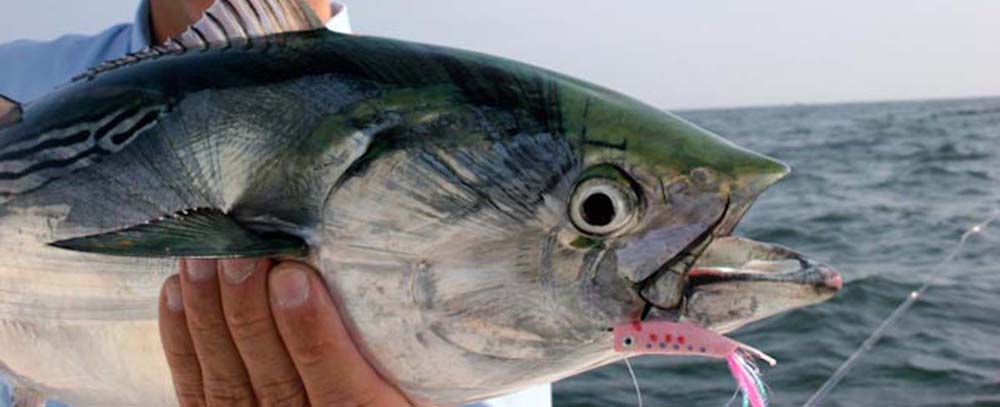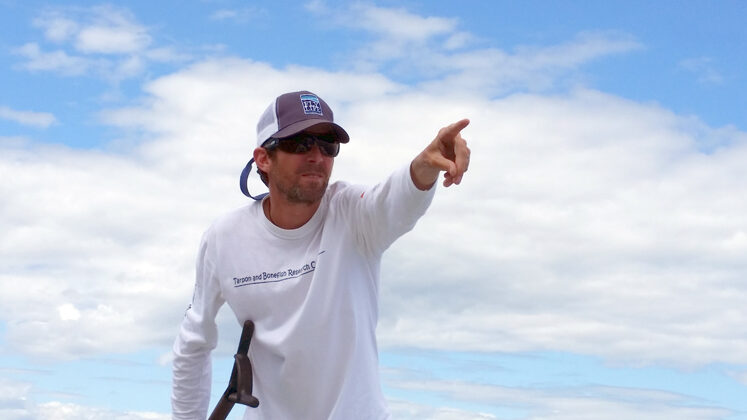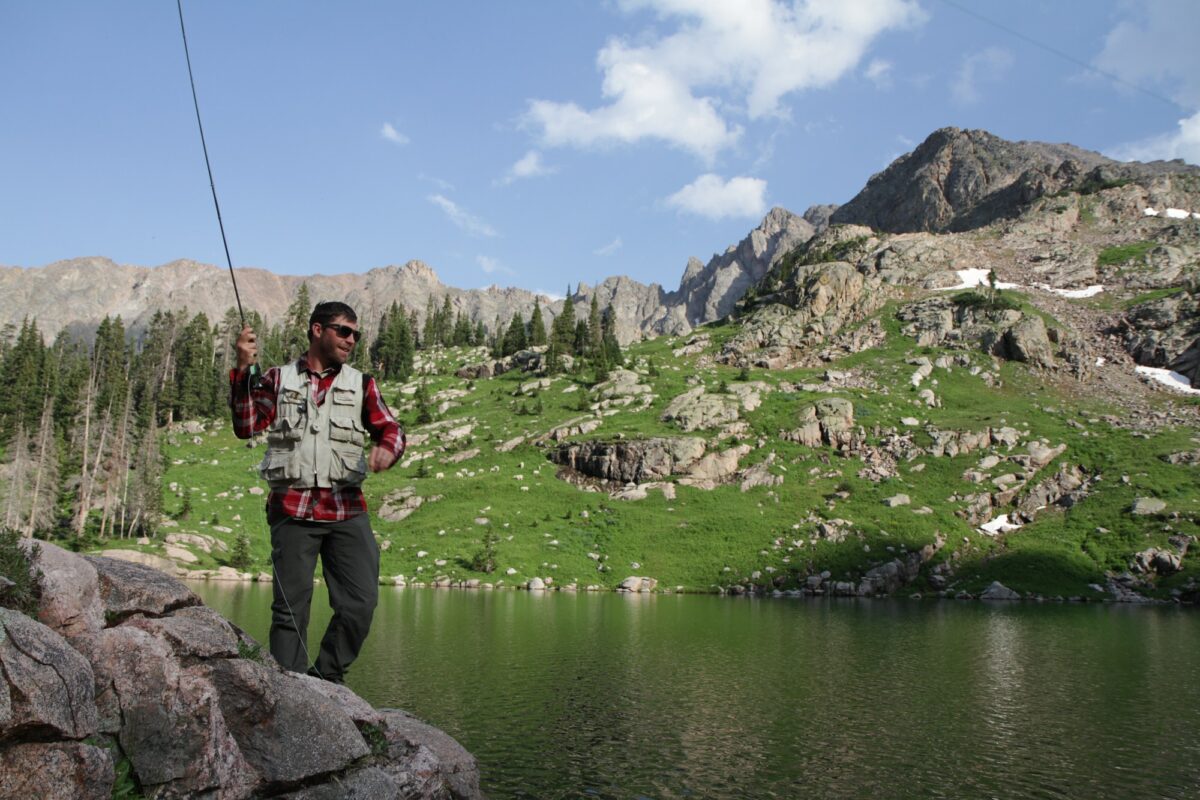Look for polycarbonate and Trivex plastics as they are inherently impact resistant
By Skip Clement
Even if blessed with near-perfect vision, eyewear on the job as a desk jockey staring at a monitor all day, trucker overlander hauling an 18-wheeler, upland bird shooter, or fly fisher at any coordinate – sight can make or break the day.
Avoid glass lenses as they are more prone to shatter
Never buy cheap gas station sunglasses. While economical, most of these create enough distortion to interfere with your fly fishing and safety

Capt. Andrew Derr’s regular clients going for the gold – albies.
Suitable eyewear can also protect your eyes from UV exposure, leading to photokeratitis in highly bright environments. Long-term UV exposure also leads to cataract development later in life. It’s prudent to protect your eyes from wind and dust. These environmental factors can handicap you with watery or dry eyes.
Dry eye is especially problematic for contact lens wearers. Ask your eye doctor if daily wearing lenses might improve your comfort.
Try using traditional aviator glasses with full metal frames that securely hold the entire lens edges, not’ ball grip’ frames that pinch the lenses between two contact points that work best. Too, sports sunglasses provide excellent coverage and protection but are more prone to fogging in cold conditions. Regardless of style, choose a frame that hugs your face comfortably.
Protect your eyes from UV exposure, which can lead to photokeratitis lead to cataracts, and protect your eyes from wind and dust, which causes watery or dry eyes.
— Josh Tatman, optometrist

“Guideline Eyegear – Alpine polarized sunglasses. These reasonable priced shades ($59.95) offer crisp optics, lightweight, rugged construction and refined style with good wraparound coverage.” Capt. Andrew Derr photo.
Every fly fisher needs eyewear that covers two conditions: low light and bright light
Lenses with a slight tint can be an excellent choice for fly fishing on overcast days – yellow, copper, and pink are popular colors for this application. Brown, copper, and amber lenses also increase contrast, making it easier for you to differentiate colors.
Note: Mirror coatings will darken your lenses slightly, but they will also show more scratches.
Prescription Eyewear
When considering the best hunting eyewear for your prescription, consider your prescription’s limitations. Suppose you have a high prescription (greater than -4.00 or +3.00) or an astigmatism correction greater than -2.50. In that case, you likely won’t be able to use large, wrap-around frames because your lenses would be prohibitively thick and create too much peripheral distortion. You won’t care how cool you look if you feel like you’re swimming in a fishbowl.
Fortunately, there are good options for those of us with a higher prescription. Consider a smaller aviator or wayfarer shape for sunglasses. Some sports styles don’t wrap around too much. Choose the smallest lens size that you think covers enough to block the wind for clear glasses to minimize your lens thickness and weight.
If you have a lower prescription, sport wrap frames are a great option, as they provide lots of protection from wind, dust, and snow. Ask your optician for digitally surfaced lenses that compensate for the curvature of the frame – minimizing any distortion and provide edge to edge clarity. Wrap frames can fog badly in cold temperatures, so make sure there’s enough of a gap between the frame and your brow line to allow some ventilation.
— Josh Tatman, optometrist

Fly fishing. Envato image.
Choosing a metal frame will allow you to achieve a custom fit on your nose, which is critical for all-day comfort. If you prefer a plastic frame, look for one that hugs your nose well. Some plastic frames have rubber nose pads that reduce slipping.
The lens, as mentioned above, colors are available in most prescription lenses. Again, a primary pair of clear or slightly tinted glasses can complement a pair of prescription sunglasses to cover all light conditions. Brown, amber, yellow, and copper lenses enhance contrast while fishing.
Bifocals
Multifocals like lined bifocals or progressive lenses will give you clear vision both near and far. However, keep in mind that these lenses are more cumbersome to use. Generally speaking, single-vision distance lenses will outperform any multifocal when fly fishing. The exception is when you need to manage flies and tie things, but you can manage with “low-set bifocal.” Even the best progressive lenses will have more peripheral distortion than a single vision lens.

